


Newsletter/Nuusbrief 114
March/Maart 2014
The second meeting of 2014 took place on Monday 10th February. Richard Tomlinson used the open house slot to give advance notice for the proposed excursion on 9th – 11th September 2014 to participate in commemorating the centenary of the tragic rail accident near the head of the Hex Railway Pass in the Western Cape in 1914. Nine members of the Kaffrarian Rifles lost their lives and 102 were injured. Some 1 000 volunteers from the regiment, now renamed the Buffalo Volunteer Rifles, were travelling by rail from East London and King William’s Town to Cape Town, en route to fighting the Germans in South West Africa. The proposal is for members of SAMHSEC and of the BVR to proceed independently to the Hex River Valley, there to travel by rail up the disused and preserved section of the old line (bypassed by a new alignment from 1989) to the Kaffrarian Rifles monument for a service of remembrance. The party will then return in a more leisurely fashion down the line, taking in the splendid scenery and viewing the remains of fortifications, graffiti on rocks, etc, resulting from the British defence of this vital rail pass during the Anglo-Boer War (1899-1902). Following further enquiries, the Branch will shortly put together a proposal for this excursion to become the second three-day field trip for 2014.
The curtain raiser was presented by Andre Crozier on the tour which he and his wife, Lynne, undertook to the First World War battlefields during June 2013. The first port of call was Delville Wood, where they spent the day visiting the memorial and walking though the wood and the sleepy village of Longueval. On arrival they found the Commonwealth War Graves Commission hard at work in the cemetery restoring each tombstone. Not only are the cemeteries immaculately maintained, but flowers are planted in front of each gravestone. The whole of Delville Wood is excellently maintained: it receives many visitors and is a credit to South Africa. Andre discussed briefly the day by day progress of the battle with reference to maps.
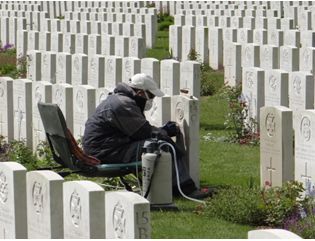
After Delville Wood they went to see the Butte de Warlencourt, which is an artificial mound just next to the Albert-Bapaume road. Here the South African First Infantry Brigade was involved in one of the many futile attempts to capture this position. Next was the most impressive memorial at Thiepval, which commemorates the 73 000 British and Commonwealth missing for whom there is no grave. The names of all 73 000 are inscribed on the memorial. They then visited the underground museum at Albert, which is situated in the tunnels used at the time to conceal troop movements. The displays demonstrated the contrast between the British trenches and the deep comfortable bunkers enjoyed by the Germans on the high ground at the start of the battle of the Somme.
In the same area they visited the Australian memorial at Villers-Brettoneux, where the Australians stopped the Germans in the desperate days of April 1918 and prevented Amiens from being captured. Further to the north they visited Vimy Ridge, where the Canadians undertook one of the most successful operations of the war and where a huge memorial has been erected to the 63 000 Canadians who died during the war. The trenches in the area have been preserved by lining them with sandbags filled with cement.
Finally, they visited Ypres in Belgium around which the battle raged throughout the war. They attended the last post ceremony at
Menin Gate together with a large number of tourists. The ceremony takes place every evening come hail or shine. They were fortunate that a detachment of the Royal Air Force Regiment was also in attendance, which added to the occasion.
Despite initial misgivings about hiring a car and driving on the right, it turned out fine and Andre and Lynn found the Somme River area very tranquil and picturesque, and the traffic very light.
The main lecture, titled the Battle for the Golan Heights: The Valley of Tears was presented by Franco Cilliers. The Battle for the Golan Heights, in Northern Israel, started at 13h53 on the 6th October 1973. It was part of the Yom Kippur War that began with a surprise attack on Israel on two fronts, and was fought between Israel and the surrounding Arab states.
An immediate problem faced by the Israelis was that the senior command structure of Northern Command was either on leave or attending meetings in Tel Aviv when the war broke out: this led to a command vacuum and chaos over who was in overall command of the Israeli forces in the Golan. It was left to the operations officer of the Northern Command to determine the initial disposition of the tank battalions at the start of the war. He decided that the 7th Brigade would detach one tank battalion to the southern Golan and the other two battalions would remain in the north. As such, there was an initial disposition of three tank battalions north of Kuneitra and two tank battalions in the south (see map below).
The area of the battle for the Golan Heights
The Syrian army attacked with three infantry divisions, each with an attached tank brigade, which gave them an initial attacking force of 900 tanks between the three divisions. The divisions were each assigned a front: one in the north, one in the centre and the third in the south. These infantry divisions were in turn supported by two armoured divisions with the latest T-62 tanks, making for a total of 470 tanks between them.
The Syrian plan of attack was for the bridging tanks to be in the van. They would bridge the anti-tank ditch which was 5m wide and 3m deep and the infantry would then take over the Israeli strong points. It was intended that the battle tanks would subsequently break out into the rear of the Israeli positions. The Israeli tanks overlooking the anti-tank ditch started to engage the Syrians at 3 500m with their priority being the bridging vehicles. The Israeli tanks were generally able to fire 2.5 rounds for every Syrian shot.
The fighting around the various strong points was extremely fierce. For example, the three tanks supporting strong point 111 were joined by six additional tanks led by the 188th Brigade deputy commander Maj. Askovrov. While waves of Syrian tanks and Armoured Personnel Carriers were approaching the strong point, Askovrov’s tank gunner, being one of the best in the Israeli Defence Force knocked out a total of 35 tanks and APCs. Maj. Askovrov’s tank was hit four times without being knocked out. The tanks supporting strong point 111 were, however, knocked out one by one. Askovrov’s tank saw a Syrian tank at 50m and successfully engaged it. When a second Syrian tank appeared at 30m, he and the Syrian tank fired at the same time. Major Askovrov was knocked unconscious and flung out of his turret. The remaining tanks continued to engage the Syrians, but ceased firing as the Syrians bypassed them and moved out of range.
Because of the stiff resistance in the northern Golan, the Syrians re-orientated their advance towards the southern Golan. The fighting in the south of the Golan was intense, with the one battalion losing 12 of its 36 tanks and two of its three company commanders dead and the third wounded. At 16h30 Israeli Gen. Hofi returned and divided the Golan into the north, commanded by the 7th Brigade, and the south commanded by the 188th Brigade. The situation in the north was now under control, with one battalion having lost seven tanks, the two other battalions having lost none.
During the night the Syrians used bulldozers to fill in the anti-tank ditch and infiltrated tanks and vehicles between the Israeli positions. They also pushed through in the south and nearly reached El Al, which almost allowed them to look down into the Jordan Valley. One Syrian tank commander, whose radio communication was intercepted, reported that he could see the Jordan Valley, but when he requested permission to advance it was denied. The Israelis believed that the Syrian objective was to advance into the south towards the Arik Bridge and so they prepared defensive positions on the western side of the Jordan River. The Syrian plan was actually to take Nafakh and the Bar Ynot Bridge in the central Golan. Their High Command decided that the advance in the south should be halted to reorganize and that they should rather continue to attack in the northern Golan. The Syrians consequently reinforced failure in the north instead of their success in the south.
During the night, the Syrians that had penetrated the Israeli lines changed their direction of advance from an east to west to a northern direction to allow them to attack Nafakh. The Israelis managed to stop the Syrian advance on the two main North-South routes of the Golan - the Tapline road, where Lt. Greengold fought with grim determination and won Israel’s highest medal for valour - and on the Reshet road, where Capt. Zamir and his company managed to blunt the advance of a Syrian brigade. This resulted in the Syrians using a route that led through the villages of Hushinya, Ramitia and Sindina.
The Israeli reservists also started arriving during the first eight hours after call up, instead of the 24 hours the Syrians believed they would take. The reservists were also taking over the fighting in the southern and central Golan. The Israeli High Command was sending all reinforcements towards the Golan Heights to start with the counter-attack to push the Syrians back.
The Syrian force approaching Nafakh from the south was part of the Syrian 1st Armoured Division. There was an unsuccessful attempt to delay their advance at Ramitia with two Companies. Lt. Col. Gottfried’s force, part of the reinforcements moving up to Nafakh, was tasked to try and stop the Syrian advance on Nafakh. Gottfried started to engage the Syrians at 1 000m and he remembered eight or nine Syrian vehicles burning before his tank was hit, throwing him out of the turret. His force failed to stop the Syrian advance. Col. Ori Orr’s force was ordered back from covering Kuneitra to go to Nafakh’s aid. He sent three tanks into a blocking position to the East of Nafakh and advanced with the other 15 tanks along the high ground, flanking the Syrian advance. They then engaged 40 Syrian tanks. Lt. Greengold had also fallen back to Nafakh. Upon reaching the town, he found Syrian tanks in the compound upon which he proceeded to place them under fire, continuing to engage all enemy tanks and vehicles until none were moving.
By nightfall on the second day, Col. Ori Orr had managed to create a four mile defensive line running east-west. This was the first organized defensive line in the southern Golan since the start of the war. The Syrians attempted a further attack in the Valley of Tears in the North, where the fighting was difficult for the Israelis as they only had 34 operational tanks left. They managed, however, to hold the line and, after suffering heavy losses, the Syrians withdrew. After the battle there were between 350 and 450 Syrian vehicles lying destroyed or abandoned in the Valley of Tears.
The Israelis started a counter-attack into Syria the following day and were rapidly in a position to threaten Damascus.
Future meetings and field trips/ Toekomstige byeenkoms en uitstappe
The next meeting will be on 10th March 2014 at 19h30 at the EP Veteran Car Club in Port Elizabeth. The open house slot will be by Ian Pringle on Anglo-Boer War refugees in Lesotho. The AGM will be in lieu of the curtain raiser, followed by the main lecture entitled 61 Mech by Brian James. The meeting will be preceded by the screening at 18h30 of the next episode of the ‘World at War’ series which was not broadcast on television. This will be the remainder of Episode G.
Matters of general interest / Sake van algemene belang
New member
We welcome Sam van den Berg as a member of the South African Military History Society. We hope that you will enjoy a long and happy association with the Eastern Cape Branch, SAMHSEC.
Award for Bravery
A South African currently serving in the Royal Marines, 26 year-old Craig Buchanan from Cape Town, was recently decorated for outstanding bravery and “great courage in the face of the enemy” when he received the Military Cross from Prince Charles. See details at:
Retirement of Capt. Charles Ross
Captain Charles Ross, SAN (Ret) has retired as Secretary of the South African Agency of the Commonwealth War Graves Commission. Charles has done sterling work on South African War Graves and has always been interactive with, and supportive of, the South African Military History Society. We wish him well in his retirement.
South African WW I Commemorations
The South African Military History Society is planning a range of commemorative activities over the next five years, a number of them in collaboration with the South African National Museum of Military History in Saxonwold. These will include exhibitions, concerts, films, tours lectures and poetry readings. It is assumed that notice of these will be carried in the Johannesburg Branch Newsletter. Also watch this space.
World War I Centenary Year
Starting this month, we will carry a feature of some kind relating to WW I. Here we look briefly at six books widely considered as among the greatest classics relating to the war. WW I was also known to the pre-WW II generation as The Great War. In the future, the two are likely to be seen as one conflict with a 20 year truce and re-armament period in the middle.
Erich Remarque’s 1929 novel All Quiet on the Western Front, written from the German point of view, is widely regarded as the universal story of men at war and is argued by many to be the finest novel to emerge from either side. It tells of the courage, suffering, comradeship, brutality and tenderness of men in battle facing death and mutilation on a daily basis, and of their difficulties in relating to their homes and their lives back in Germany. Conscripted straight from school, Remarque (1898-1970) served on the Western front in 1916 until he was invalided out as a result of wounds received. The book was condemned by Hitler as being pacifist and undermining militarism, and was banned. It was one of the earliest books to be burned by the Nazis. In 1930 a film was made which won the Academy Award for Best Picture. An excellent film of the same name was produced in 1979 and as of 2013, another version was in production.
The sequel to the book titled The Road Back, was published in 1931 and continues along a broadly similar theme, describing the experiences of young men who have returned from the trenches and are trying to integrate back into society.
Siegfried Sassoon MC OBE (1886 – 1967), best known as one of the ‘war poets’, in 1930 published his Memoirs of an Infantry Officer, a fictionalised account of his own life experiences during and immediately after the war. The book creates a graphic picture of life in the trenches, including the Somme, in 1916 and 1917. Soon after its publication, it was heralded as a classic. Sassoon’s support for the war vacillated between staunch support and near-treasonous opposition.
Emelio Lussu’s Sardinian Brigade is the classic Italian novel of the Great War. Focusing on the entire Italian-Austro-Hungarian Front, where some of the fiercest fighting of the war took place, it tells of the daily lives of soldiers and their officers in a theatre in which half a million Italians died or were wounded. The cumulative picture it leaves of this all but forgotten campaign is unforgettable. Lussu (1890-1975) was a highly decorated officer in the Sardinian ‘Sassari Brigade’, the most famous infantry unit of the Italian army during the Great War. Having initially favoured entering the war, Lussu’s subsequent views and writings fluctuated between revolutionary opposition and pacifism. After the war, he became a leader of the Italian resistance to Mussolini and a Socialist senator in Italy's post-war parliament.
Vera Brittain a British writer, feminist and pacifist is best remembered as the author of the best-selling 1933 memoir Testament of Youth. This book, essentially about the futility of death in war, remains one of the most powerful and widely read war memoirs of all time. In it she recounts not only her experiences as a VAD nurse in France, but her own feelings and views as the war progressed. Brittain was deeply affected by the loss of her fiancé, her brother and other close friends who were all killed and she never really came to terms with it. Their letters to each other are documented in her book Letters from a Lost Generation.
Herbert Sulzbach’s non-fictional account of his four years serving in the field artillery on the Western Front, With the German Guns, has been highly praised since it was first published in 1935. Unlike some of the other classics mentioned here, Sulzbach records the pride and exhilaration of serving in what to him was a just cause. It is also reflects a high sense of duty, chivalry, courage and fairness. Ironically, because he was a Jew, Captain Sulzbach OBE (1894-1985), who won the Iron Cross twice (2nd and 1st class), had to flee Germany in 1937 and eventually served as an intelligence officer in the British army in WW II.
Websites of interest/Webwerwe van belang
World War I
Britain’s WWI diaries go online
Innovating in Combat : Sir Basil Schonland, South African Scientist of the 20th century, and pioneer of military wireless and radar
Brian Austin Frontline Signalling, Military, Wireless Telegraph 7th February 2014
Obituaries
Major-General Logan Scott-Bowden was a sapper who carried out daring missions to ensure the Normandy beaches were ready for D-Day
For other recent military obituaries, seebr>
The Telegraph 25th February 2014
The Cold War
The National Atomic Testing Museum: come for the nukes, stay for the test and measurement
History of nuclear testing at the Nevada Test Site
Miscellaneous sites
Inside The [US] Army’s Spectacular Hidden Treasure Room
The Toyota Bakkie: War Chariot of the Third World
Equality for women at Afghanistan's officer academy
Final Flight of ‘The Dambusters’
Resource materials of military historical interest/ Bronmaterieel van krygsgeskiedkundige belang
Willis Sam 2009 (recently reprinted) The Fighting Temeraire London Quercus
399 pages with 18 full colour plates, five maps and index. The paperback edition is available from Bargain Books for R199.00.
PI
Geskiedenis van WO1 in Oos-Afrika
Indien iemand belangstel in die geskiedenis van die Eerste Wêreldoorlog in Oos-Afrika, is daar 'n wonderlike versameling van dokumente en baie kaarte in 'n mandjie by die Nasionale Argiewe in Pretoria. Ek was verbaas dat daar kaarte in is van 1918 en dokumente oor die Duitse magte. Wie ook al belangstel kan gerus gaan kyk en vra vir die Smuts Archive Private Papers - Maps of East Africa. Met erkenning aan Paul Els , Wel en Wee van militere veterane.
The Border War
We have received advance notice of the following book, due to be published in August 2014. Battle on the Lomba 1987: The day a South African Armoured Battalion shattered Angola’s last mechanized offensive: A crew commander’s account. Written by David Mannall, it will be published in paperback by Helion & Co of Solihull, UK
Members are invited to send in to the scribes, short reviews of, or comments on, books, DVDs or any other interesting resources they have come across as well as news on individual member’s activities. In this Newsletter, there have been contributions by Richard Tomlinson, Malcolm Kinghorn, Barry Irwin, Peter Duffell-Canham and Michael Irwin.
Chairman: Malcolm Kinghorn: culturev@lantic.net
Tailpiece
Source: Yahoo News/ AFD 17th February 2014
Joseph Turner’s ‘The Fighting Téméraire tugged to her last Berth to be broken’
Photograph courtesy of Andre Crozier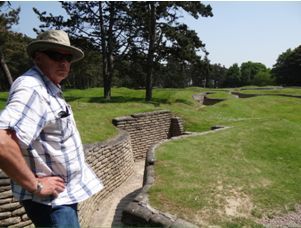
Photograph courtesy of Lynne Crozier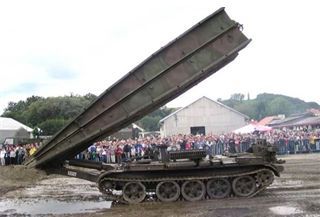 The Golan Heights offensive was initiated by Syrian air and artillery attacks on the Israeli positions. The Israelis had intelligence that the Syrians were planning an attack, but were unsure of the time. The information had however allowed them time to start reinforcing their Northern Command about 10 days before the attack: the 7th Armoured Brigade was moved up from the Sinai resulting in a better ratio between the numbers of tanks on the two sides. The ratio had been 18:1 in favour of the Syrians, but after the reinforcement this was reduced to 8:1.
The Golan Heights offensive was initiated by Syrian air and artillery attacks on the Israeli positions. The Israelis had intelligence that the Syrians were planning an attack, but were unsure of the time. The information had however allowed them time to start reinforcing their Northern Command about 10 days before the attack: the 7th Armoured Brigade was moved up from the Sinai resulting in a better ratio between the numbers of tanks on the two sides. The ratio had been 18:1 in favour of the Syrians, but after the reinforcement this was reduced to 8:1.
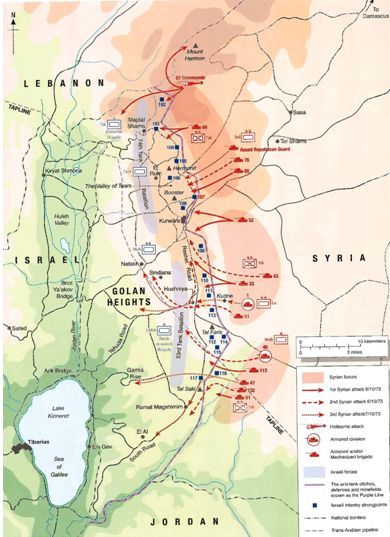
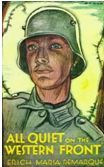
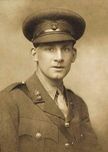
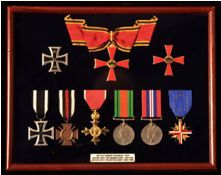
Robert Graves (1895-1985) was an English poet, scholar and prolific writer. His memoir of his early life, including his role in the Great War, Good-Bye to All That (1929) has never been out of print. Like his friend and fellow officer, Siegfried Sassoon, he was commissioned in the Royal Welsh Fusiliers. The book provides a detailed description of trench warfare, comments on military incompetence at Loos and the bitter fighting in the first phase of the Somme Offensive, where Graves was severely wounded. He was severely traumatised by his war experience and describes being haunted by ghosts and nightmares. Apart from recording his experiences in the army, Good-Bye to All That records and reflects on the passing of the pre WW 1 ‘old order’ and many of its social conventions.
Katy Lee IOL News 14th January 2014
http://www.iol.co.za/news/world/britain-s-wwi-diaries-go-online-1.1631602
/
[See also SAMHSEC Newsletter 112 and the Society’s website at http://www.samilitaryhistory.org/vol141ba.html.]
The Telegraph 16th February 2014
http://www.telegraph.co.uk/news/obituaries/military-obituaries/
Stephen Cass IEEE Spectrum 24th Feb 2014
Brookings Institute 2014
http://www.brookings.edu/about/projects/archive/nucweapons/nts
Benny Johnson BuzzFeed Politics 20th February 2014
Kyle Mizokami War is Boring 7th November 2013
https://medium.com/war-is-boring/ea4a121e948b
Caroline Wyatt BBC News, Afghanistan 28th January 2014
http://www.bbc.co.uk/news/magazine-25763312
RAF Online Survey
China building second aircraft carrier
Marex The Maritime Executive 19th January 2014
This book is a gem for anyone interested in naval history in general or the Royal Navy in particular: it is a judicious blend of social history, naval combat and human interest. Underpinned by Joseph Turner’s famous painting The Fighting Temeraire tugged to her Last Berth to be Broken up, 1838, this is the combined ‘biography’ of two ships of the same name: one French, captured by the British in 1859, and the other built for and in service with the Royal Navy from 1798 to 1838, and named in honour of the first. Most of the book focuses on the second HMS Temeraire which had a varied career ranging from the blockading of French ports and mutiny, to Trafalgar and the post-Trafalgar naval war in the Baltic. Amongst her exploits was going to the support and rescue of HMS Victory at the Battle of Trafalgar, without which the latter would probably not have survived. Temeraire is one of the iconic ships of the Royal Navy in sail, well-loved by the British public in her day and deeply mourned at the end of her life. In a 2005 public survey, Turner’s painting, which is loaded with allegory and symbolism relating to the passing of an age, was voted the best English painting in history. Authored by one of today’s best young naval and maritime historians, this book is meticulously researched, and written in a lively and riveting style. Not a single typographical or other error was found.
Secretary: Richard Keyter: richard.keyter@gm.com
Scribes (Newsletter): Anne and Pat Irwin: p.irwin@ru.ac.za
Society’s Web address: http://samilitaryhistory.org
Here is a hard to believe one, but it is true by all accounts:
No F/A-18 Hornet or F5 Tiger fighter aircraft of the Swiss Air Force were scrambled when a high-jacked Ethiopian aircraft recently entered Swiss airspace heading for Geneva. This, explained the Swiss ‘Air Force’, was because it happened outside business hours: the ‘Air Force’ is only available 08h00 until noon, and from 13h30 to17h00, and its airbases are closed at night and over weekends. Italian and French fighter jets were scrambled to escort the plane through their respective airspaces, but were not permitted to shoot it down over Swiss air space even if there was clear aggressive intent, as that was “a question of national sovereignty".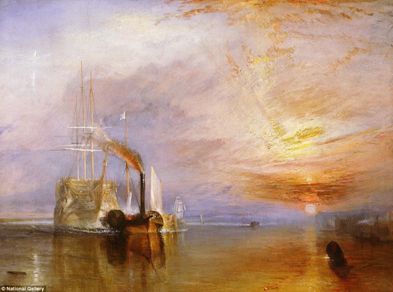
Source: Wikimedia Commons/Public domain.
The painting, considered by many to be the best English painting ever, is full of symbolism relating to the passing of the age of sail and its replacement by steam; symbolising the coming of modern times and the industrial age.